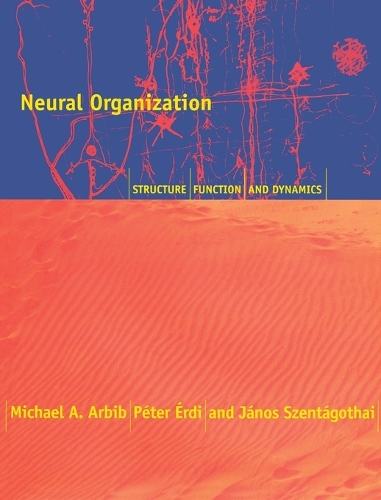
Neural Organization: Structure, Function, and Dynamics
(Paperback)
Publishing Details
Neural Organization: Structure, Function, and Dynamics
By (Author) Michael A. Arbib
By (author) Peter Erdi
By (author) Alice Szentagothai
MIT Press Ltd
Bradford Books
10th October 1997
United States
Classifications
Professional and Scholarly
Non Fiction
Neurosciences
612.8
Physical Properties
Paperback
420
Width 221mm, Height 274mm, Spine 33mm
1338g
Description
In Neural Organization, Arbib, rdi, and Szentagothai integrate structural, functional, and dynamical approaches to the interaction of brain models and neurobiologcal experiments.In Neural Organization, Arbib, rdi, and Szentagothai integrate structural, functional, and dynamical approaches to the interaction of brain models and neurobiologcal experiments. Both structure-based "bottom-up" and function- based "top-down" models offer coherent concepts by which to evaluate the experimental data. The goal of this book is to point out the advantages of a multidisciplinary, multistrategied approach to the brain. Part I of Neural Organization provides a detailed introduction to each of the three areas of structure, function, and dynamics. Structure refers to the anatomical aspects of the brain and the relations between different brain regions. Function refers to skills and behaviors, which are explained by means of functional schemas and biologically based neural networks. Dynamics refers to the use of a mathematical framework to analyze the temporal change of neural activities and synaptic connectivities that underlie brain development and plasticity-in terms of both detailed single-cell models and large-scale network models. In part II, the authors show how their systematic approach can be used to analyze specific parts of the nervous system-the olfactory system, hippocampus, thalamus, cerebral cortex, cerebellum, and basal ganglia-as well as to integrate data from the study of brain regions, functional models, and the dynamics of neural networks. In conclusion, they offer a plan for the use of their methods in the development of cognitive neuroscience.
Author Bio
Michael Arbib has played a leading role at the interface of neuroscience and computer science ever since his first book, Brains, Machines, and Mathematics. From Neuron to Cognition provides a worthy pedagogical sequel to his widely acclaimed Handbook of Brain Theory and Neural Networks. After thirty years at University of Southern California he is now pursuing interests in "how the brain got language" and "neuroscience for architecture" in San Diego. Peter Erdi is Henry R. Luce Professor of Complex Systems Studies at the Center for Complex Systems Studies, Kalamazoo College, Kalamazoo, MI.
